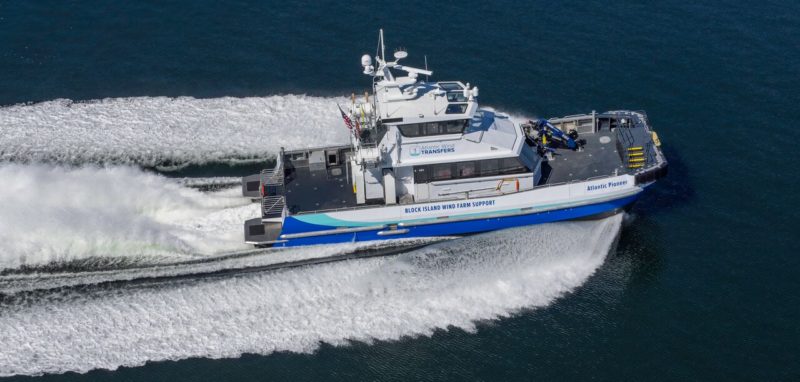With a dozen offshore wind energy projects planned on the East Coast, New York port interests are in high gear pitching their state as the industry’s logical future base.
“A few years ago, we would have had trouble filling this room. But as you can see things are moving quickly,” said Michael Stamatis, president of Red Hook Terminals in New York City, at the State University of New York Maritime College’s offshore wind energy conference Sept. 26.
“There is no better place to be in for offshore wind than New York and New Jersey,” said Stamatis.
“This is going to be in the middle,” declared Boone Davis, president of Atlantic Offshore Terminals, whose company aims to develop a new offshore wind energy port facility on Staten Island, N.Y., well clear of the city’s bridges and other limits on moving massive wind turbines by ship.
But New York has plenty of competition. From New Bedford, Mass., to Norfolk, Va., port operators and their allies in business, labor and politics are working to snag a share of the business.
“There is no U.S. megaport” comparable to European bases used by the wind industry there, said Alan Duerr, director of offshore wind in North America for classification society DNV GL and former offshore wind lead for the U.S. Department of Energy.
“We aren’t a cut-and-paste of Europe here in the U.S.,” said Duerr. “It won’t happen overnight. There will be a need for multiple ports.”
Those will range from deepwater ports like New York and Norfolk, to smaller locations where turbine foundations and other components can be shipped out for assembly.
Closer to the project sites, developers are already sizing up locations to berth survey boats and crew transfer vessels (CTVs) to ferry workers. In Montauk, N.Y., at the east end of Long Island, wind developer Ørsted has a deal to base some vessels at the Inlet Seafood dock, despite tense relations there between the company and the commercial fishing community.
Northeast fishermen’s concerns, backed by NOAA fisheries officials, pushed the federal Bureau of Offshore Energy Management to hold back on an environmental impact statement for the Vineyard Wind project off Massachusetts while BOEM conducts a broader review of the industry’s potential cumulative impacts.
But that step back has done little to dampen port operators’ enthusiasm. Some 140 miles up the Hudson River from New York Harbor, the Carver Companies at the port of Coeymans near Albany are lined up for building turbine foundations and floating them south by barge.
The port has shown how to “tie upstate jobs to downstate projects” by building massive bridge and power plant components onsite and shipping them out, squeaking under the Hudson’s 132’ air draft bridges, said Steve Kelly of Carver.
“We can see offshore wind is going to be exactly the same,” he said. “We can do anything here, that’s the bottom line.”
Norfolk is the largest East Coast port without a height restriction – a major consideration with the next generation of 12-megawatt turbines more than 800 feet tall.
Being able to assemble and move turbines from ports will make wind energy projects more price competitive, said Davis of Atlantic Offshore Terminals. But with the biggest projects now proposed in the New York Bight, Davis said the port of New York and New Jersey makes sense.
“There are no potential megaports,” he said. Compared to the likely costs of networking New York locations through a final assembly point there, Norfolk “might as well be Denmark” for the higher costs of bringing vessels and turbine components north, he said.
New York State officials on Wednesday announced they will seek “port operators and market participants who are interested in upgrading and investing in New York ports to support the state’s burgeoning offshore wind industry,” offering up to $200 million in funding.
The New York State Energy Research and Development Authority, Empire State Development and Department of Transportation issued a “request for qualifications” as a first step toward selecting potential partners for public-private investment in port infrastructure. Proposers must identify at least one port facility, the level of site control there and its value and viability for offshore wind operations.
“The state’s ports are expected to unlock billions in long-term local economic develop potential and will be serving as a hub for the broader northeast region’s offshore wind industry,” according to the announcement by NYSERDA.



.JPG.small.400x400.jpg)

